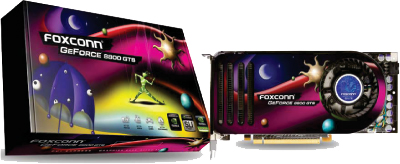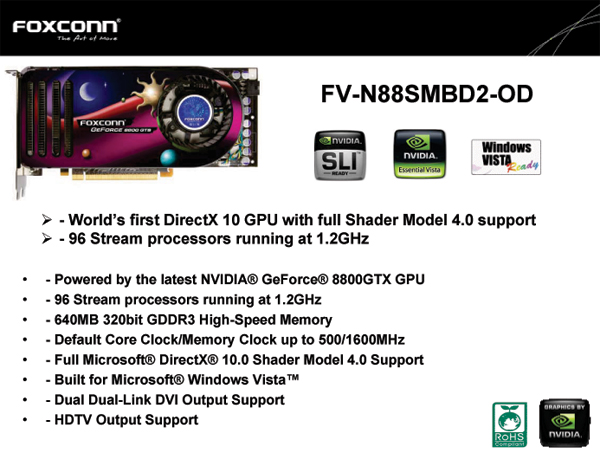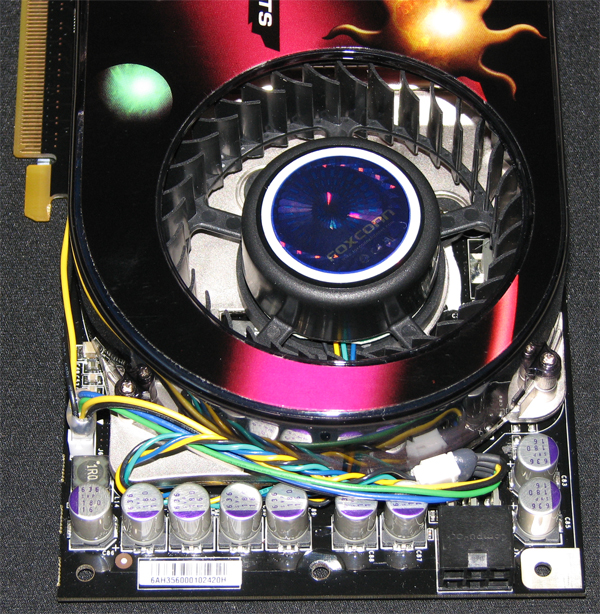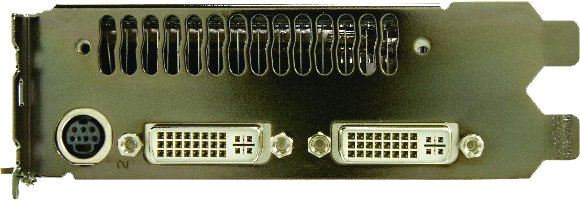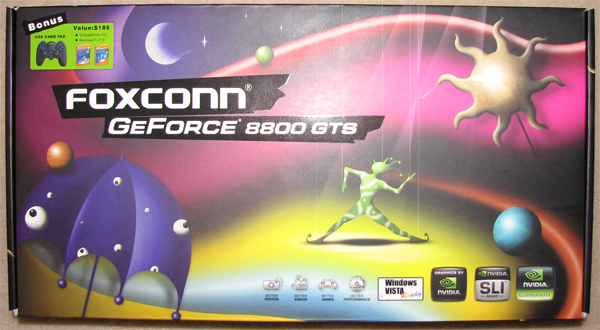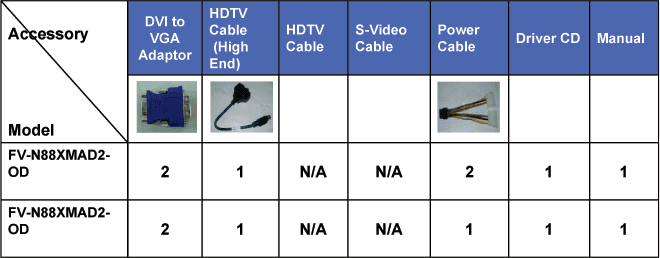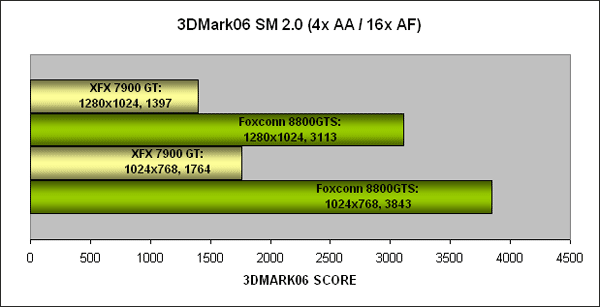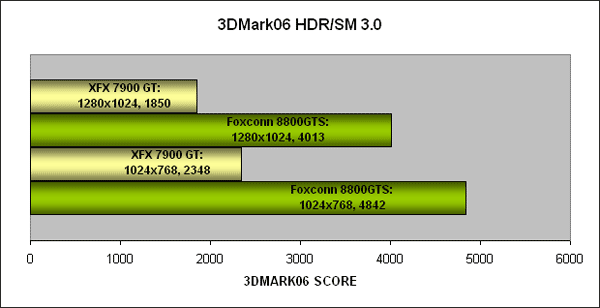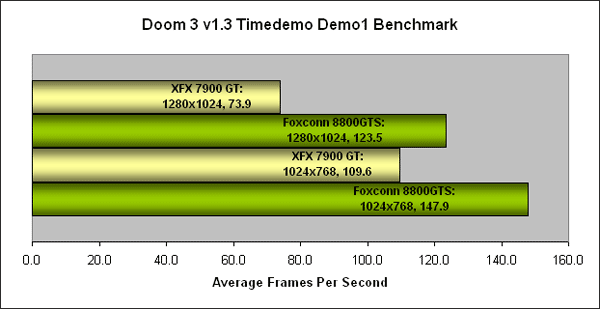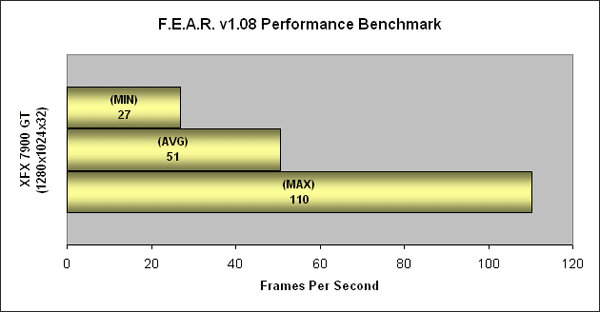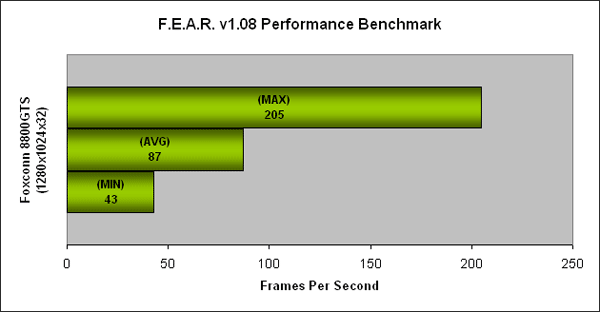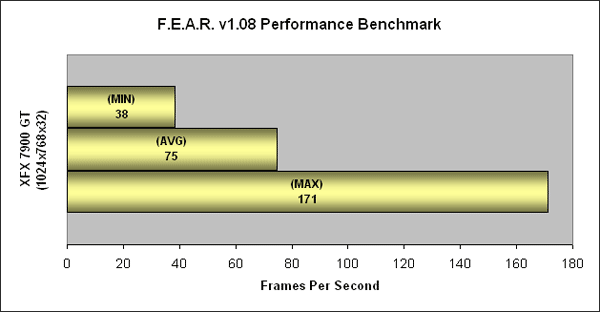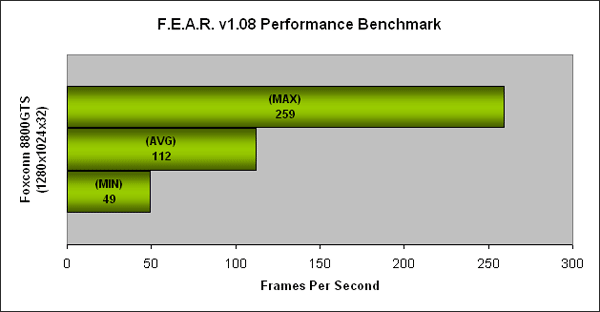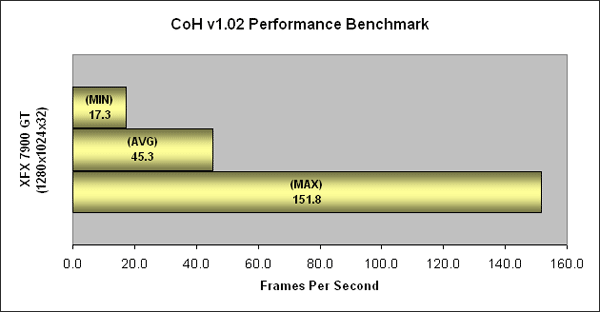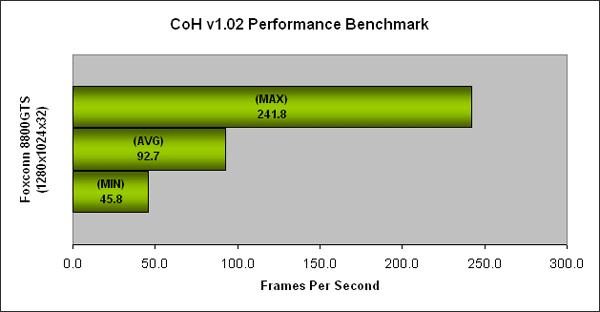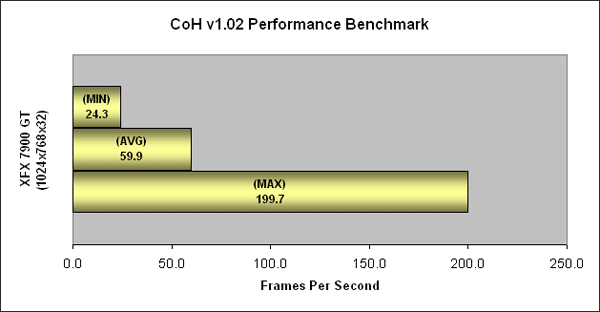The GeForce 8800 GTS is based on the same G80 GPU which NVIDIA uses to build the flagship GeForce 8800 GTX. While the GTS variant is the second best in this 8th generation of products, is not just a binned down version which didnt meet the strict standards and performance of the GTX; The GTS is built as its own product model. While most enthusiasts will likely clear the shelves clean of any GeForce 8800 GTX offering simply because it is the newest and fastest product available, it wouldnt be a wise decision to discount the more affordable GeForce 8800 GTS.
Introduction
As this article goes to press, the weather outside is quickly changing into winter conditions and the temperature outside is fast approaching freezing. Soon there will be snow in the hills, which has me imagining an early start for the ski season with midweek trips up to Lake Tahoe for snowboarding, and maybe even catch up on some back-country skiing. Fortunately the creative minds at NVIDIA have made certain that it won’t be cold indoors, not with the recent hardware and game releases. Bjorn3d.com is very pleased to debut the fabled codename G80 line of video cards for a world premier release.
FOXCONN GeForce 8800 GTS by NVIDIA
Summer has smoldered straight into autumn thanks to a few great gaming releases, such as Company of Heroes and Battlefield 2142. It seems NVIDIA timed this release very well since ATI is now coping with the recent acquisition by AMD, which has helped create the possible delay of the new R600 technology until 2007. But don’t you worry, because even the most die-hard ATI fanboy will come to appreciate what NVIDIA has developed in the GeForce 8800 GTX and GTS. What I’m about to show you might even make you reconsider your allegiance.
FOXCONN Model FV-N88SMBD2-OD: short for PERFORMANCE.
Once you become accustomed to change, you learn that some things have really remained the same. In previous models, NVIDIA has taken to giving each model of video card a level designating suffix. While GeForce buffs may recall that the GTS suffix hasn’t been around for the past five generations, it returns in this eighth generation of GPU’s to replace what used to be the GT edition as the second most powerful product in series. While it seems curiously restrictive to begin your brand new series of video cards with the model number 8800, it is just like NVIDIA to shoot for the moon and then let everything that doesn’t make it there fall into a series somewhere under this model. This is where the GTS version comes into action as the second level offering for the 8800 series.
FV-N88SMBD2-OD Key features
About the Company: FOXCONN
Foxconn is the registered trade name of Hon Hai Precision Industry Co., Ltd., a global leader in the design, manufacture, and distribution of advanced computer, communications, and consumer electronics components, including motherboards, graphics cards, CPU coolers, barebone systems, and chassis for personal computer desktops and servers. With over three decades of demonstrated manufacturing excellence, Hon Hai sets the standard in the industry for product quality and reliability, customer support, and value. In 2005 Hon Hai had sales of $25 billion (USD).
The Channel Service Division (CSD), part of the PCE Business Group of Hon Hai, is Hon Hai’s worldwide organization for servicing channel customers. Guided by the mantra “The Art of More”, CSD is dedicated to making it simpler and more affordable for its customers to offer superior information systems to their consumer and enterprise customers. CSD serves a network of distributors and OEM customers in Asia, EMEA, and the Americas.
Closer Look: FOXCONN GeForce 8800 GTS
Sharing some common ground in either version, both the GeForce 8800 GTX and GTS models are fully HDCP compliant, and have full support for SLi, HDTV, VIVO, and dual dual-link DVI. Both cards have also been equipped with dual-slot heatpipe-equipped coolers, which I have noticed run silent; not quiet or low noise, but s-i-l-e-n-t. This helps features such as the 128-bit HDR with 16x anti-aliasing and NVIDIA’s Quantum Physics Engine run cool on either video card. In previous generation NVIDIA products, configurations were limited no more than 4x anti-aliasing. Beginning with the GeForce 8800 series you can utilize 16x anti-aliasing, and all without multiple card configurations.
Top View: FOXCONN GeForce 8800 GTS (Click for large image)
The GeForce 8800 GTS is based on the same G80 GPU which NVIDIA uses to build the flagship GeForce 8800 GTX. While the GTS variant is the second best in this 8th generation of products, is not just a binned down version which didn’t meet the strict standards and performance of the GTX; The GTS is built as its own product model. While most enthusiasts will likely clear the shelves clean of any GeForce 8800 GTX offering simply because it is the newest and fastest product available, it wouldn’t be a wise decision to discount the more affordable GeForce 8800 GTS.
Bottom View: FOXCONN GeForce 8800 GTS (Click for large image)
The G80 GPU produces 575MHz for the GTX, but it will be slightly slower at 500MHz for the GTS. I’m sure that most computer enthusiasts will read that last sentence as writing on the wall: the GTS has obvious overclocking ability. Memory on the GTX amounts to 768MB of GDD3 which runs at 900MHz on a 384-bit interface for 86GBps of bandwidth, while the GTS receives 640MB on a 320-bit memory interface for 64GBps bandwidth. Again, the potential for taking an already over-the-top video card and bringing it closer to the #1 spot will always entice overclockers to push every frame of performance from these products.
GeForce 8800 GTS Capacitors (Click for large image)
Creating a slight divide between models, the GTX will be equipped with 128 unified shaders which will operate at 1350MHz for a theoretical texture fill rate of 38.4 billion pixels per second, and the 8800 GTS will subsist on 96 unified shaders operating at 1200MHz. Something tells me that the web will soon be full of talk regarding the “unlocking” ability in the 8800 GTS pipelines. For now however, I have found myself very satisfied with 96, and will be for quite some time.
Key features:
- NVIDIA® unified architecture with GigaThread TM technology
- Full Microsoft® DirectX® 10 Shader Model 4.0 support
- NVIDIA® SLI Ready
- 16x full-screen anti-aliasing
- True 128-bit floating point high dynamic-range (HDR) lighting
- NVIDIA® Quantum Effects physics processing technology
- Two dual-link DVI outputs support two 2560×1600 resolution displays
- NVIDIA PureVideoTM technology
- PCI Express® Support
- OpenGL® 2.0 support
- NVIDIA® ForceWare® Unified Driver Architecture (UDA)
- Built for Microsoft® Windows Vista
Closer Look: FOXCONN Accessories
Not that a person would be dissatisfied by the purchase of the FOXCONN GeForce 8800 GTS all on its own, but FOXCONN has decided to bundle a few of the usual accessories along with something that is well beyond the ordinary. In addition to a DVI to VGA adapter and HDTV cable, there also a 6-pin 12V power connection cable, and a few special add-in products.
Retail Packaging: Top and Bottom View (Click for large image)
Utility CD’s: RestoreIT v7.0 & VirtualDrive Pro v10.0
1. RestoreIT v7.0: Powerful, automatic, user-friendly data backup and recovery.
-
Recover from a data disaster —even when Windows won’t boot
-
Restore system files AND personal files
-
Automatically back up to a network or USB device
2. VirtualDrive Pro v10.0: Virtual Drive accelerates your game play, run PC games without the disc.
- Protect CDs and DVDs by playing electronic pictures
- Organize virtual CDs in a user-friendly interface
- Pre-load multiple games and swap them out via hot keys
No lead here. Even the CD-ROM is RoHS Compliant!
3. USB 3D Game Pad
-
Digital/Analog mode
-
4-axis, 12-fire buttons
-
Vibration feedback function
-
Turbo/clear function
-
Compatible with Windows 2000/XP
USB Gamepad Controller (Click for large image)
Testing: Setup
In order to complete a thorough review of the FOXCONN GeForce 8800 GTS, it is imperative that the audience understand how each test was conducted and what factors influenced the results. Please note that benchmarks and test scores are always relative to the conditions and hardware present at the time of testing. Even if you have my exact same system, the scores may be close but will never be the same.
It should be noted that after testing with the GeForce 7900 GT using ForceWare driver v93.71, I utilized Driver Cleaner Pro to remove all trace of the driver prior to loading ForceWare v96.89 for the GeForce 8800 GTS. This was a mandatory proceedure, since the uninstall process did not remove all of the previous files related to the v93.71 driver.
Test System
• Motherboard: Abit AB9-Pro P965 (Intel ICH8R Chipset) BIOS v1.5
• Processor: Intel E6600 Core 2 Duo 2.4GHz CPU
• Cooling: Thermalright SI-128 heatsink with 1200RPM 120mm Fan
• Memory: 2GB (1GB x2 modules) DDR2-800 Corsair TWIN2X2048-6400C4 RAM
• Video Card #1: XFX GeForce 7900 GT 470/1700 MHz with Arctic Cooling NV Silencer 5 Rev 3 (ForceWare v93.71)
• Video Card #2: FOXCONN GeForce 8800 GTS 500/1600 MHz (ForceWare v96.89)
• Power Supply Unit: 650W Antec TruePower Trio TP3-650
• Hard Disk 1: Western Digital WD360GD 10,000 RPM SATA
• Optical Drive: Toshiba SH-S162L DVD R/W
• Enclosure: NZXT Adamas Aluminum Mid-Tower Case
• Operating System: Windows XP Professional SP-2 with all updates as of 11/07/06
• Display: Dell E1905FP 19″ Digital (DVI) LCD, 1280×1024 pixels Maximum Resolution
Benchmarks
• 3DMark06 SM 2.0 Test (4x Anti Aliasing & 16x Anisotropic Filtering)
• 3DMark06 HDR/SM 3.0 Test (Optimal Anisotropic Filtering)
• Company of Heroes v1.02 Performance Test (Maximum Settings: Shadow Quality High, AA Enabled, Texture Detail Ultra)
• F.E.A.R. v 1.08 Performance Test (Maximum Settings: 4x Anti Aliasing & 16x Anisotropic Filtering)
• Doom 3 v1.3: Timedemo Demo1 Benchmark (Ultra Quality Settings: 4x Anti Aliasing)
• Prey Demo: HOC/Guru3D Benchmark (Maximum Settings: 4x Anti Aliasing & 16x Anisotropic Filtering)
Testing Methodology
I will be testing and comparing the FOXCONN GeForce 8800 GTS against the XFX GeForce 7900 GT. Obviously, I would love to compare the new top-dog against the ATI X1950 XTX and the NVIDIA GeForce 7950GX2, but I don’t own either of these cards, and you probably don’t either. The FOXCONN GeForce 8800 GTS is now the second best video card available as of 11/08/06, and will demonstrate its power in all of the benchmarks mentioned above.
The synthetic benchmark tests in 3DMark06 will not be configured to run the default tests, primarily because doing so will factor in a battery of CPU tests into the final score. Since everything is relative and subjective in reviews, I choose to concentrate my efforts on benchmarking the video cards, and not skew results with my high-end processor. Every test was conducted at both 1024×768 and 1280×1024 resolutions, which are the two most widely used screen resolutions for 17″ and 19″ displays respectively. Each test shall be run after a system restart, and then the first test for each benchmark will be ignored. This process proved extremely important in the Doom 3 benchmark, as the first run served to cache the demo; subsequent tests performed twice as well as the first. Each test will be run in succession three times, except for F.E.A.R. and Company of Heroes (CoH) which were tested five times each.
Since all of these benchmarks represent different gaming engine technology and graphic rendering processes, I feel that this battery of tests will provide a diverse range of tests for you to gauge performance. Unfortunately, at the time of this writing there are no DirectX 10 games available, so DirectX 9 versions were used for all tests. But nobody really expects to have any DirectX 10 games available before DirectX 10 video cards were ever released anyway
Testing: Light Stress Benchmarks
Please note that in all benchmarks, a higher score or frames per second indicates better performance. Without further delay, here are the light stress benchmarks:
3DMark06 Shader Model 2.0
At both resolutions, the GeForce 8800 GTS out-performed the GeForce 7900 GT by more then 100% in the Shader Model 2.0 tests.
3DMark06 Shader Model 3.0
Just as it did with the Shader Model 2.0 tests, the SM 3.0 benchmark proves that the GeForce 8800 GTS is easily twice as powerful as the previous generation. Hopefully, 3DMark07 will incorporate Shader Model 4.0 tests so that Bjorn3d can follow up on the progress.
Prey Demo
Not much surprise in the Prey Demo results, which begin to indicate that the FOXCONN GeForce 8800 GTS just begins to be tasked at the 1280×1024 resolution. These results were based on the Guru3D demo and the HOC benchmark tools.
Doom 3 Timedemo
In the Doom 3 tests, the differences begin to grow less evident, but they are still clearly there. If you would like to duplicate this test with your own installation of Doom 3 v1.3, simply open the command console by pressing CTRL+ALT+~, and type in “timedemo demo1”. As you will see in the more stressful benchmarks, the FOXCONN GeForce 8800 GTS earns its keep at the top of the hill.
Testing: Heavy Benchmarks
Don’t let the title fool you, these tests will hardly tax the FOXCONN GeForce 8800 GTS, but they are what I would consider the most aggressive tests available. The only reason they are labeled heavy is because there is nothing more taxing available to benchmark this product at the time of this writing.
FEAR 1280×1024 on the XFX GeForce 7900 GT
FEAR 1280×1024 on the FOXCONN GeForce 8800 GTS
Despite my obvious lack of mastery when it comes to building charts, I believe you will see the three recorded levels to be easily comparable between the two cards. While there aren’t the major differences at the minimum FPS range, the maximum FPS range shows the sheer power available in the FOXCONN GeForce 8800 GTS.
FEAR 1024×768 on the XFX GeForce 7900 GT
FEAR 1024×1024 on the FOXCONN GeForce 8800 GTS
Just as in the 1280×1024 tests, the GeForce 8800 GTS doesn’t make wide gains at the low end level. By this point, I have determined that the GeForce 8800 GTS primarily makes the difference in the higher demand ranges.
Company of Heroes 1280×1024 on the XFX GeForce 7900 GT
Company of Heroes 1280×1024 on the FOXCONN GeForce 8800 GTS
As indicated by the benchmarks above, the XFX GeForce 7900 GT barely manages to average the 40 frames per second as an average frame rate. Most gamers would not consider anything under this average to be playable, so these settings have shown the limitations for the 7900 GT series. As a welcome change of pace, even the lowest frame rate is well above 40 frames per second at 45.8 FPS in what is probably the most demanding test and settings out of the entire battery of benchmarks. As a testament to the overpowering ability which the FOXCONN GeForce 8800 GTS possesses, the maximum frame rate under these harsh conditions is an astonishing 241.8 frames per second!
Company of Heroes 1024×768 on the XFX GeForce 7900 GT
Company of Heroes 1024×768 on the FOXCONN GeForce 8800 GTS
I was surprised that the GeForce 8800 GTS did not outperform the GeForce 7900 GT by a larger margin in the maximum frame rates. It seems clear now that the 8800 GTS pushes ahead at the higher end much better then I see it at the lower end, comparatively speaking. Regardless of the test, the FOXCONN GeForce 8800 GTS has trounced every test in its path. With F.E.A.R. and CoH applying the most pressure to this card, even these tests received outstanding results.
Company of Heroes with the GeForce 8800 GTS (Click for large image)
At the end of all the benchmarks, it was time for me to give the FOXCONN GeForce 8800 GTS a taste of real world usage. I think I picture really is worth a thousand words, and this one does justice. It’s too early to tell, but I think my game may have even improved while using the GeForce 8800 GTS.
Conclusion
Honestly, there is just no possible way for me to find dissappointment in this product. The FOXCONN GeForce 8800 GTS is by no means another addition to the market, it is clearly in a class all of its own. Because it is the second best available at the time of launch, I believe it will cater to the large segment of the market who want the best without the highest price. It is expected that the FOXCONN GeForce 8800 GTS will retail for $449-499 USD at the time of release.
Don’t be fooled: The 8800 GTS still holds function before fashion.
Final Thoughts
The installation was a breeze, with no special tools or connectors required. Since the GeForce 8800 GTS measures only 9 inches long, which is a mere inch longer then the GeForce 7900 GT, I found no problem at all installing this card into my rather confined NZXT Adamas case. As mentioned previously in this review, the GeForce 8800 GTS uses two card slots in a single PCI-Express slot. It requires only one six-pin 12V connection, and can be used in an SLi configuration if it is desired.
Since the Foxconn GeForce 8800 GTS does not require an SLi capable power supply unit, and it costs less then the more expensive GTX version, I believe this will be the choice for gamers who are not able to purchase “King of the Hill” rights. Since the FOXCONN unit offers several additional accessories, namely the USB controller, I see the purchase holding a lot of value in the lower high-end category. I firmly believe that nobody, not even those few owners of the ATI X1950 XTX and the NVIDIA GeForce 7950GX2, will have any need to feel disappointed. Quite simply: this card delivers.
For the record, I have grown accustomed to replacing the stock NVIDIA cooling solution with the much better performing and much more quiet Artic Cooling Silencer products, which is what was done on the test XFX 7900 GT. In the case of the FOXCONN 8800 GTS, the DELTA BFB1012L fan operated at a very silent whisper level the entire time, keeping the GPU at 60° to 62° Celsius range at idle and 78° to 80° Celsius range under load. Obviously NVIDIA paid attention to the complaints surrounding the previous generation of video cards by upscaling the cooling to a heatpipe-equipped solution; yet the new 8800 series still warms the room.
Finally, since this article is a review of the FOXCONN GeForce 8800 GTS retail product, I did not go into great detail about overclocking or unlocking. Stay tuned to Bjorn3d.com for updated information regarding the potential that I am certain the Geforce 8800 GTS holds inside it. Could this perform as well as the GeForce 8800 GTX? We shall soon find out…
Pros:
+ Exciting design and look with blue LED’s
+ Supports DirectX 10 and Shader Model 4.0
+ Impressive stock cooling solution
+ High Dynamic Range Rendering (HDR) compliant
+ SLi certified and expandable
+ 2nd best video card available at time of writing
+ Creates a whole new class of video card standards for 3D performance
+ Value-packed accessory package with USB game controller
Cons:
– Expensive
– Driver support: clean install required
Final Score: I rate the FOXCONN GeForce 8800 GTS with a final score of 9.0 (Great) out of 10, and bestow the prestigious Bjorn3D Golden Bear Award.
|
Our NVIDIA® 8800 Series Graphics Card Coverage |
||
|
When planning for this mammoth task we decided the best approach would be to prepare one additional introductory article expressing what NVIDIA® brings to the table from a technology, Physics, and general usage standpoint for each of the products we’ll being presenting. |
 |
|
|
This is the best of all worlds when it comes to graphical rendering, both 2D and 3D. This card writes a totally new standard for their competition, it should be quite interesting to see how things shake out. |
 |
|
|
In conclusion other than the subtle nuances captioned above, this is by far the finest card, I’ve ever had the pleasure to test. |
 |
|
|
This is the best of all worlds when it comes to graphical rendering, both 2D and 3D. This card writes a totally new standard for their competition, it should be quite interesting to see how things shake out. |
 |
|
 Bjorn3D.com Bjorn3d.com – Satisfying Your Daily Tech Cravings Since 1996
Bjorn3D.com Bjorn3d.com – Satisfying Your Daily Tech Cravings Since 1996
